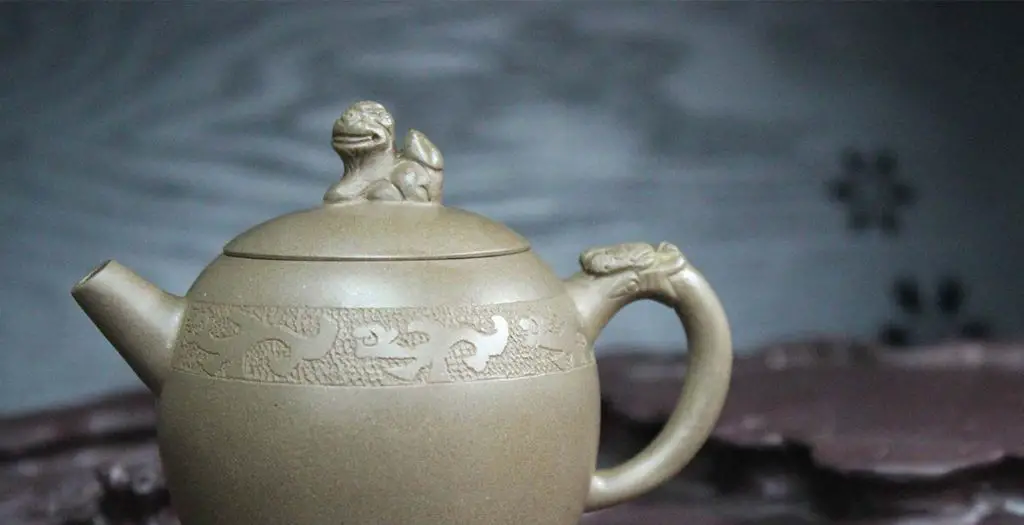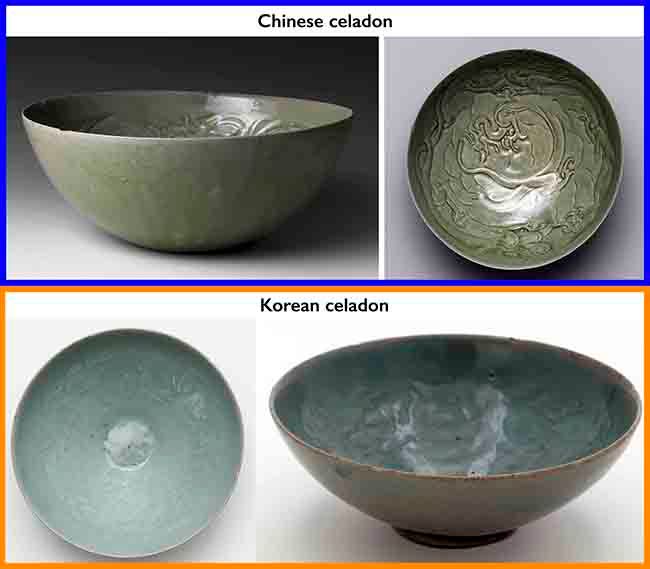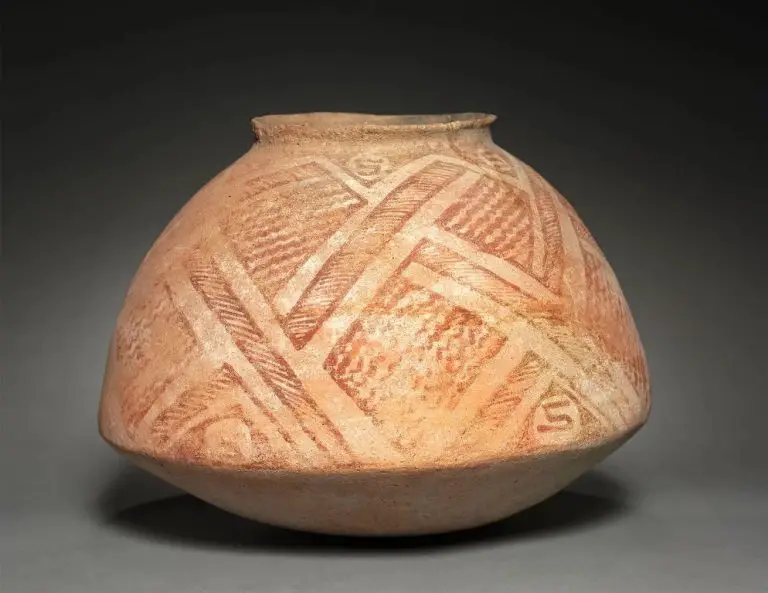Are Yixing Teapots Good?
What are Yixing teapots?
Yixing teapots, also known as purple sand teapots or purple clay teapots, are traditional Chinese teapots made from Yixing clay in Yixing, Jiangsu Province, China. They originated in the 15th century during the Ming Dynasty and are handmade from compact stoneware (陶瓷 “táocí” in Chinese). The clay is mined from XiShi mountain, and teapots are shaped and fired without using glaze so the clay is porous and can absorb the flavors and aromas of the tea being brewed.
Yixing teapots are unglazed and made from clay produced near Yixing which is traditionally referred to as “purple” or “brown” in color. The fineness of the clay allows it to be formed very thinly and enables heat to be conducted directly to the brew. Teapots made from Yixing are meant for use with black and oolong teas, as they can acquire the patina from tea brewing over time. The patina enhances the natural colors of the stoneware, and the teapots darken into various tea-colored hues over time from brewing. This process contributes to the flavor and color of the tea.
The history of Yixing teapots dates back to the Song Dynasty, and they became particularly popular during the Ming Dynasty as tea drinking culture flourished. The teapots are made from clay produced only in the region of Yixing, hence the name Yixing teapots. They are handmade by skilled teapot makers and signed with artist marks on the bottom. Over the centuries, Yixing teapots have become prized for their artistic merit, beauty, and ability to enhance the tea drinking experience (Wikipedia, 2023).
Benefits of Yixing teapots
Yixing teapots are prized for their ability to enhance and improve the flavor of tea. This is due to several key factors:
The porous clay absorbs the oils and flavors from the tea leaves over time, imparting those flavors back into the tea during brewing. According to Teasenz, the longer a Yixing teapot is used, the more seasoned it becomes.
The clay retains heat very well, allowing the water to stay hotter for longer. The Teavivre site states this means more time for the flavors and oils to infuse into the water [1].
Yixing teapots are meant to be dedicated to a single type of tea. Having a separate teapot for green, black, oolong, etc. allows the natural oils and flavors to build up over time rather than mixing.
The unglazed, porous surface absorbs oils and flavors from the tea, in a process known as “seasoning”. Over many uses, the teapot becomes seasoned to a specific tea, enhancing and improving the flavor.
How to use a Yixing teapot
Using a Yixing teapot properly is important to bring out the fullest flavor and aromas from tea. Here are some key tips on using a Yixing teapot:
Seasoning the teapot: A new Yixing teapot needs to be seasoned before regular use. This involves multiple rinses with boiling water to remove any traces of clay dust or odors. Pour hot water into the teapot and discard 3-5 times before making tea in the pot for the first time. The teapot will continue to absorb flavors and aromas with each subsequent use.
Only use for one type of tea: Yixing teapots absorb the essence of whatever tea is brewed in them. For best results, dedicate each teapot to only one type of tea such as oolong, black, green, etc. Using the same pot repeatedly for one tea allows the flavor to build up over time.
Proper brewing instructions: To brew tea in a Yixing, first warm the teapot with hot water and discard. Add the desired amount of tea leaves into the pot. Pour hot water (175F – 212F depending on tea type) over the leaves and let steep for the recommended time. Pour into cups and enjoy. Yixing teapots are ideal for multiple short steeps.
Proper use allows a Yixing teapot to enhance the tea drinking experience. With care and seasoning, a Yixing teapot can last for many years.
Choosing a Yixing Teapot
When shopping for a Yixing teapot, there are several key factors to consider:
Size
Yixing teapots come in a wide range of sizes, from tiny 100ml pots to large 800ml pots. Consider what type and amount of tea you’ll typically be brewing to choose the right size. Smaller teapots around 100-150ml work well for individual drinking, while larger sizes are good for sharing tea with others.
Shape
Common shapes include traditional handle-less pots, pots with handles and spouts, rectangular, round, or hexagonal. Shape impacts brewing, so pick a shape suited to the tea type you’ll brew most. For example, oolong and black teas do well in rounder, wider pots. Pots with a narrower shape work better for delicate green and white teas.
Style
Yixing teapots are made in traditional and more modern styles. Traditional pots feature earthy hues like brown, black, and red, with handmade imperfections. Modern pots exhibit precise craftsmanship and come in a broader color palette. Choose a style you find visually appealing.
Reputable Brands
Stick to established and reputable Yixing brands and makers to ensure authenticity and quality. Well-known brands include Purple Clay, Dragon Tea House, and Yixing Zisha Pottery. Buying directly from Chinese teaware specialists is ideal. Check reviews to verify reputation.
Quality and Authenticity
Examine the teapot closely before purchase. High quality authentic Yixing clay has a fine smooth texture. Check for crisp thin spout and lid details with no drips or roughness. The inside should be uniform in color with no stains. A quality stamp or maker’s mark on the bottom helps verify authenticity (Path of Cha).
Caring for your Yixing teapot
Yixing teapots require some special care to keep them in optimal condition. Proper cleaning and storage methods are important to prevent damage and extend the life of your teapot.
Cleaning methods
When cleaning a Yixing teapot, avoid using soap or detergent, as the clay is porous and will absorb any scents or flavors. The best way to clean a Yixing teapot is to rinse it out with hot water after each use. You can use a soft brush to gently scrub any stained areas. Let the teapot air dry completely before storing. Do not soak the teapot in water for extended periods, as this can damage the clay.1
Storing properly
Store your Yixing teapot in a dry, well-ventilated area out of direct sunlight. Do not stack other items on top of the teapot, as this can cause chips or cracks. Wrap your teapot in a soft cloth or store it in its original box to prevent dust buildup. Avoid drastic temperature changes and high humidity when storing your teapot.2
Preventing damage
To prevent damage to your Yixing teapot, avoid knocking or dropping it, as the clay is fragile. Do not use metal utensils which can scratch the interior. Rinse out and dry the teapot thoroughly after each use to prevent mineral deposits from building up. With proper care and maintenance, a Yixing teapot can last for many years.
The seasoning process

Seasoning a new Yixing teapot is an important process to help the pot absorb the flavors and oils of tea over time. Proper seasoning ensures the clay fully absorbs the tea and develops a beautiful patina.
The seasoning process involves several steps:
Initial rinses
First, rinse the new teapot several times with cold water, inside and out, to remove any dust or residue from manufacturing (https://www.teasenz.com/chinese-tea/how-to-season-an-yixing-teapot.html). Gently scrub the inside with a soft brush if needed. Rinsing removes impurities so the clay can properly absorb the tea.
Gradual tea brewing
Next, brew gradually stronger teas in the pot over time. Start with delicate green or white teas, then move to richer oolong and black teas. This allows the clay to slowly absorb the right amounts of oils and flavors. Don’t brew extremely intense teas like puerh initially, as it may overwhelm the pot.
Timeline for full seasoning
Full seasoning takes regular use over weeks or months. Some experts recommend quick “seasoning teas” like roasted oolongs to speed up the process. But natural seasoning over time is best to bring out the pot’s full potential. With regular use and care, your Yixing teapot will develop its unique patina and tea flavor.
Common mistakes
Yixing teapots are delicate and require proper care and use to maintain their quality and flavor over time. Here are some common mistakes to avoid with your Yixing teapot:
Using soap to clean – Never use soap to clean a Yixing teapot as it can damage the seasoning and absorb soapy flavors. Simply rinse with hot water after each use. If needed, you can gently scrub with a soft brush.
Storing improperly – Yixing teapots should be stored in a dry place away from strong odors. Do not store the lid sealed tightly on the pot as moisture needs to evaporate. Wrap in a cloth or put back in the original box for storage.
Brewing different tea types – Yixing teapots slowly absorb the flavors and oils of the tea used. For best flavor, dedicate one teapot to each type of tea such as oolong, black, or pu-erh. Never brew flavored or scented teas in a Yixing.
Yixing Teapot Alternatives
While Yixing teapots are renowned for their excellent tea brewing abilities, there are some alternatives worth considering:
Porcelain Gaiwans
Porcelain gaiwans are probably the most common alternative to Yixing teapots. They are inexpensive, easy to find, and made from glazed porcelain. The thin porcelain helps transfer heat quickly while the glaze prevents absorption of flavors and odors[1]. Gaiwans are great for brewing all kinds of tea and easy to clean.
Glass Teapots
Glass teapots allow you to visually monitor the brewing process. They provide the benefits of being odorless, flavorless, and easy to clean. Glass does not retain heat as well as clay but high quality borosilicate glass is fairly resilient to thermal shock. Matcha enthusiasts may prefer the smooth interior of glass over unglazed clay.
Clay Teapots from Other Regions
There are several other types of clay used to make teapots besides Yixing. Jianshui purple clay from China is one popular alternative known for its elegance and durability. Japanese Hagi and Tokoname teapots have excellent heat retention suited for brewing sencha and gyokuro. Korean onggi pots provide a rustic and charming option.
Are Yixing Teapots Worth It?
Yixing teapots have both pros and cons when considering their value:
Pros
Yixing teapots are prized for their ability to enhance the flavor of teas, especially oolong, black, and pu-erh teas. The unglazed porous clay absorbs some of the flavors and oils from the tea with each brewing, helping to ‘season’ the pot over time (source). This gives a subtle but noticeable boost to the tea’s natural flavors.
They also retain heat well, which is useful for brewing teas that require high temperatures like oolongs. The small size and thick walls of Yixing pots mean the water temperature can be maintained between infusions.
As works of art, high quality handmade Yixing teapots can appreciate in value. They are often passed down as family heirlooms.
Cons
Yixing pots are only intended for use with a handful of teas, like oolongs and pu-erhs. The seasoning effect that builds up over uses makes them unsuitable for switching between vastly different types of tea.
They require more care and maintenance than other teapots. The clay is prone to cracking if damaged and the seasoning can become muddled if not properly washed. Proper use and care is needed to get the most out of a Yixing teapot.
Handmade Yixing teapots can be quite expensive, sometimes hundreds of dollars, so they represent a significant investment compared to teapots made of porcelain or glass (source). For the casual tea drinker, this cost may be difficult to justify.
Cost Analysis
In considering the value of a Yixing teapot, it helps to break down the potential costs:
- A handmade high quality Yixing from an reputable artist can cost $100-$300.
- A mid-range Yixing from a factory production can cost $50-$150.
- Owning a Yixing will limit you to brewing only certain teas, requiring other teapots if you want to brew a wide variety.
- The time investment in proper care and seasoning needs accounting for as well.
For serious tea enthusiasts who focus on teas suitable for Yixing, like Yancha oolongs or pu-erh, the benefits can make the cost worthwhile. The clay enhances these teas beautifully. But for someone with more casual tea interests, the cost-benefit ratio may not add up (source).
Comparing to Other Teawares
Yixing teapots provide a unique flavor boost, but porcelain and glass offer greater versatility for those who drink many types of tea. Porcelain gaiwans and teapots cost a fraction of the price of Yixing.
Glazed ceramic kyusu teapots are also substantially cheaper than Yixing pots, while providing some similar benefits in retaining heat and brewing multiple infusions. The clay is less porous though so does not seasoning the tea.
For maximizing flavor variety with different teas, gaiwans and glass teapots allow you to easily switch between teas without cross-contamination. This versatility and lower cost may be more practical for casual tea enthusiasts.
The future of Yixing teapots
Yixing teapots have been handcrafted in China for centuries, but what does the future hold for these traditional teaware? Several key trends are emerging.
First, there is a continued commitment to carrying on the tradition of making Yixing teapots by hand. The teapots are still being shaped individually using historic clay mining and hand-sculpting techniques passed down through generations in Yixing, China (https://verdanttea.com/yixing-clay-tea-pot-introduction). Master potters train apprentices in the nuances of selecting and working with the Yixing clay.
At the same time, innovations and trends are shaping Yixing teapots for the modern era. New glazing techniques provide beautiful finishes while maintaining the teapot’s natural porousness. Contemporary shapes and embellishments put a fresh spin on the classic silhouettes. Artistic collaborations result in inspired designs. While remaining true to tradition, potters continue adapting to appeal to changing tastes.
Finally, Yixing teapots are drawing increased global interest. As access to Chinese teas expands worldwide, so does appreciation of proper Chinese teaware like Yixing pots. Potters are beginning to market internationally through online shops and participation in global trade shows. While Yixing, China remains the epicenter, these treasured teapots are gaining a wider audience of tea lovers (https://www.reddit.com/r/tea/comments/yis26d/yixing_teapots_fact_vs_fiction/).
Yixing teapots have stood the test of time, and by balancing tradition with innovation, they are poised for an exciting future keeping pace with emerging trends and reaching new markets.


